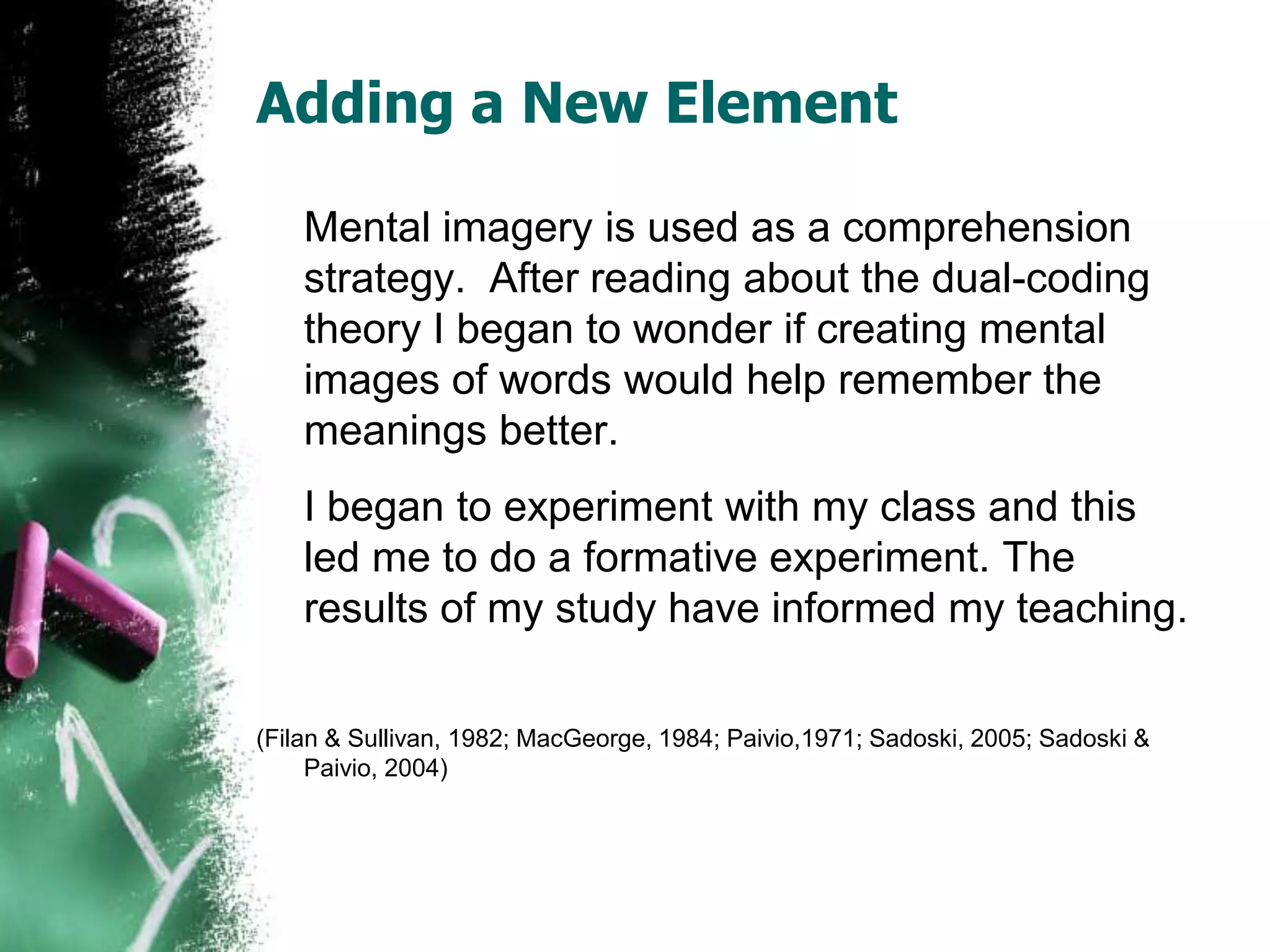The document discusses effective approaches for vocabulary instruction including selecting tier 2 words from texts, providing student-friendly definitions and examples, having students generate their own examples and sentences using the words, and reinforcing meanings through multiple exposures. It also suggests using mental imagery as a comprehension strategy by having students create mental pictures of word meanings. Formative assessment results found that incorporating mental imagery helped students better remember word definitions.


















![Vocabulary Instruction for Older StudentsTier Two Words are chosen from a text or organized around a theme(8-12 words per week depending on age).Words are presented in the context of the text. A definition is provided and a written record can be kept.The class discusses the words. Imperious is often appropriate for describing a king. How appropriate is it to [character’s name].Exploration of relationships between wordsWould you have compassion for someone imperious?Students’ use of WordsStudents work in groups to develop sentences in which the word’s meaning is clear.](https://image.slidesharecdn.com/vocabularyinstruction-100503211707-phpapp02/75/Vocabulary-instruction-19-2048.jpg)





